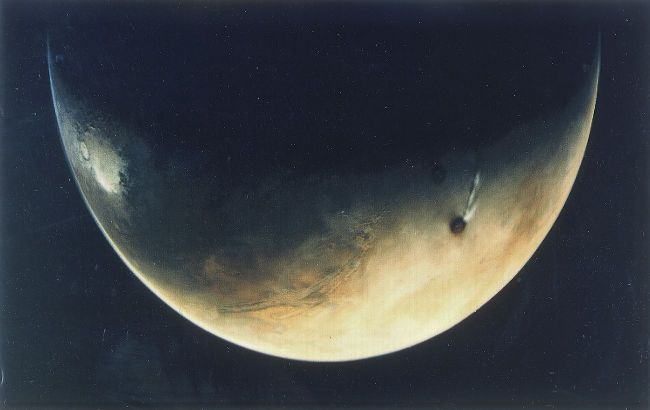Oceans of life-sustaining liquid water found beneath Mars' surface
 Illustrative photo (getty images)
Illustrative photo (getty images)
The study based on data from NASA's Mars InSight lander provides evidence of liquid water deep beneath the Martian surface, which could aid in the search for life there and offer insights into what might have happened to the planet's ancient oceans, according to Reuters.
The lander, which has been on the Red Planet since 2018, has measured seismic data over four years, examining how earthquakes have shifted the ground and identifying what materials or substances lie below the surface.
Based on this data, researchers have determined that liquid water is likely present deep below the lander. Water is considered essential for life, and geological studies indicate that over 3 billion years ago, the planet's surface was home to lakes, rivers, and oceans.
"On Earth what we know is where it is wet enough and there are enough sources of energy, there is microbial life very deep in Earth’s subsurface. The ingredients for life as we know it exist in the Martian subsurface if these interpretations are correct," said one of the authors, Vashan Wright of the University of California San Diego's Scripps Institution of Oceanography.
The study found that large reservoirs of liquid water in fractures 11.5 to 20 kilometers below the surface best explain the InSight measurements.
It notes that the projected volume of liquid water beneath the surface is greater than the volume of water that is thought to have filled hypothetical ancient Martian oceans.
"On Earth, groundwater infiltrated from the surface to deep underground. We expect this process to have occurred on Mars as well when the upper crust was warmer than it is today," Wright said.
There is no way to directly study water so deep beneath the Martian surface, but the authors said the results have implications for understanding Mars’s water cycle, determining the fate of past surface waters, searching for past or present life, and assessing the use of in-situ resources for future missions.
The study was published on August 12 in the journal Proceedings of the National Academy of Sciences.
Recent NASA missions have detected significant amounts of perchlorates on Mars. These salts can absorb water from the atmosphere, creating concentrated solutions known as brines. Scientists believe that such an environment could have supported life both in the past and potentially in the present.

